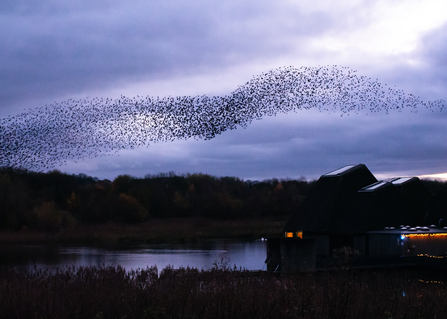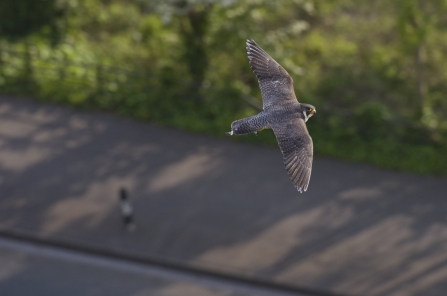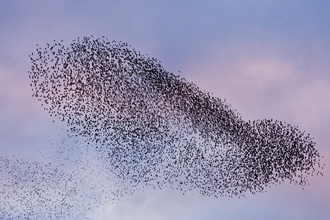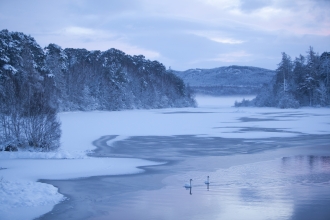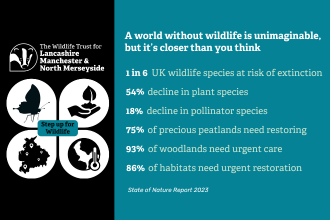What is a murmuration of starlings?
Murmurations are huge groups of starlings that twist, turn, swoop and swirl across the sky in beautiful shape-shifting clouds.
Just before dusk, small groups of starlings from the same area come together above a communal roosting site. The group grows ever larger, moving in unison in an aerial dance that casts gorgeous shapes against the waning daylight.


